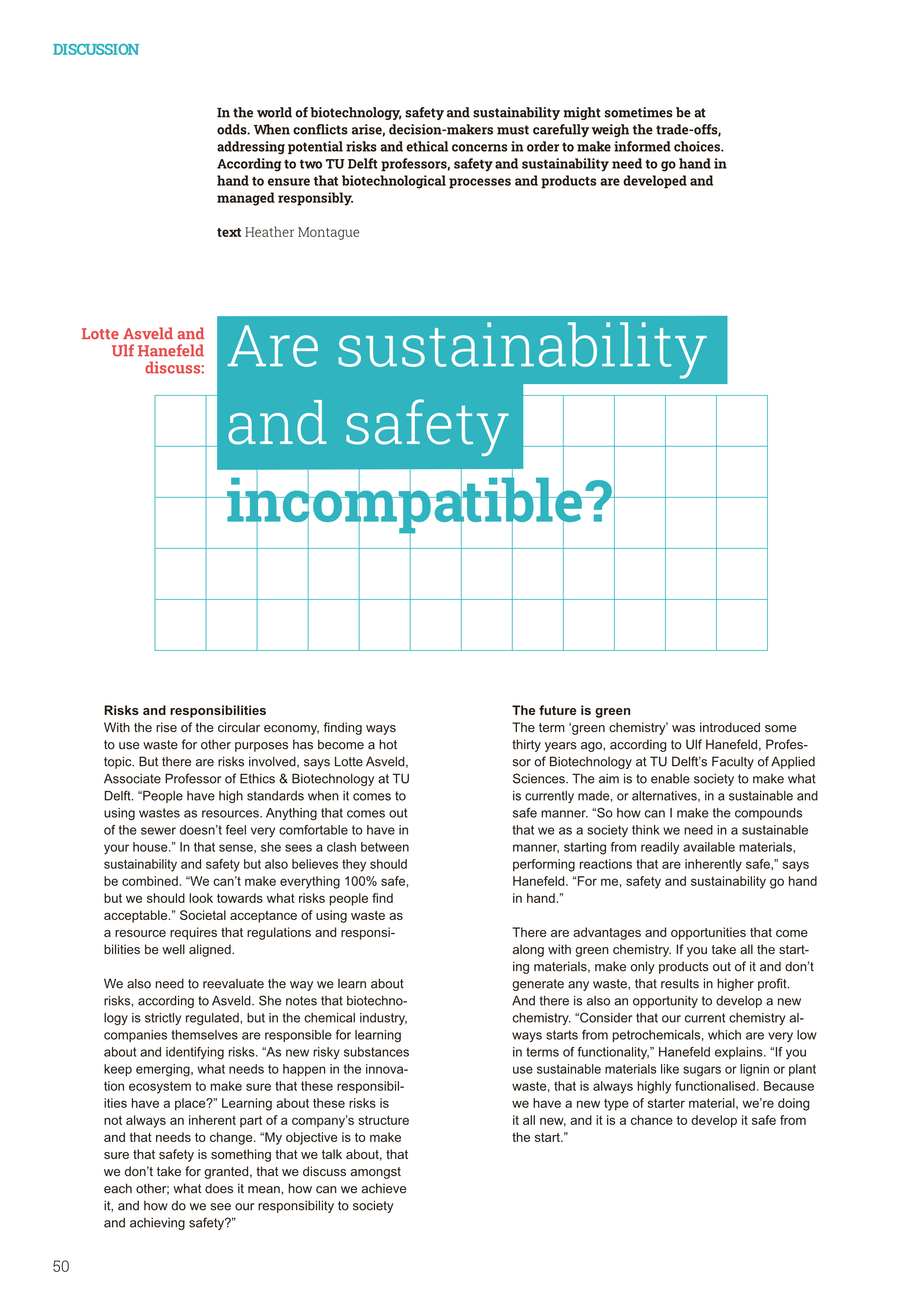Are Sustainability and Safety Incompatible?
In the world of biotechnology, safety and sustainability might sometimes be at odds. When conflicts arise, decision-makers must carefully weigh the trade-offs, addressing potential risks and ethical concerns in order to make informed choices. According to two TU Delft professors, safety and sustainability need to go hand in hand to ensure that biotechnological processes and products are developed and managed responsibly.
text Heather Montague
Risks and responsibilities
With the rise of the circular economy, finding ways to use waste for other purposes has become a hot topic. But there are risks involved, says Lotte Asveld, Associate Professor of Ethics & Biotechnology at TU Delft. “People have high standards when it comes to using wastes as resources. Anything that comes out of the sewer doesn’t feel very comfortable to have in your house.” In that sense, she sees a clash between sustainability and safety but also believes they should be combined. “We can’t make everything 100% safe, but we should look towards what risks people find acceptable.” Societal acceptance of using waste as a resource requires that regulations and responsibilities be well aligned.
We also need to reevaluate the way we learn about risks, according to Asveld. She notes that biotechnology is strictly regulated, but in the chemical industry, companies themselves are responsible for learning about and identifying risks. “As new risky substances keep emerging, what needs to happen in the innovation ecosystem to make sure that these responsibilities have a place?” Learning about these risks is not always an inherent part of a company’s structure and that needs to change. “My objective is to make sure that safety is something that we talk about, that we don’t take for granted, that we discuss amongst each other; what does it mean, how can we achieve it, and how do we see our responsibility to society and achieving safety?”
The future is green
The term ‘green chemistry’ was introduced some thirty years ago, according to Ulf Hanefeld, Professor of Biotechnology at TU Delft’s Faculty of Applied Sciences. The aim is to enable society to make what is currently made, or alternatives, in a sustainable and safe manner. “So how can I make the compounds that we as a society think we need in a sustainable manner, starting from readily available materials, performing reactions that are inherently safe,” says Hanefeld. “For me, safety and sustainability go hand in hand.”
There are advantages and opportunities that come along with green chemistry. If you take all the starting materials, make only products out of it and don’t generate any waste, that results in higher profit. And there is also an opportunity to develop a new chemistry. “Consider that our current chemistry always starts from petrochemicals, which are very low in terms of functionality,” Hanefeld explains. “If you use sustainable materials like sugars or lignin or plant waste, that is always highly functionalised. Because we have a new type of starter material, we’re doing it all new, and it is a chance to develop it safe from the start.

